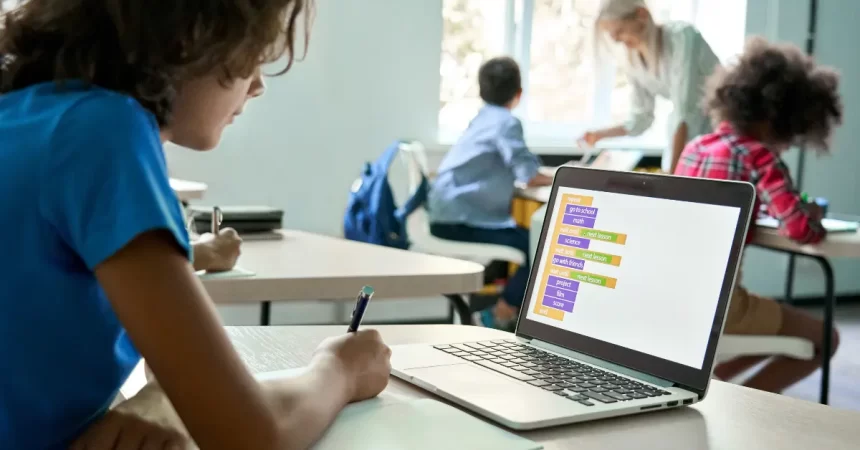In the swiftly evolving landscape of education, technology has emerged as a transformative force, reshaping how knowledge is shared and acquired. Among the most impactful innovations are educational apps, which are redefining the learning experience.
From enriching classroom dynamics to enabling remote education, these apps are reimagining modern education in profound ways. However, as with any technological advancement, there are potential limitations that educators must consider and address.
Interactive Learning: A Double-Edged Sword
Educational apps introduce a new dimension of interactivity into learning. However, the allure of screens can inadvertently lead to diminished face-to-face interactions among students. Balancing interactive screen-based activities with traditional forms of classroom participation is crucial to ensure that students continue to develop essential interpersonal skills.
Personalized Learning: An Individualized Approach
The promise of personalized learning journeys through educational apps is undeniable. Yet, as algorithms tailor content to individual students, the risk of inadvertently narrowing their exposure to diverse perspectives arises. Educators must actively supplement app-based learning with broader educational experiences that encourage critical thinking and exposure to a variety of viewpoints.
Accessible Anytime, Anywhere: The Digital Divide
The accessibility of educational apps transcends geographical barriers, but it’s essential to acknowledge that not all students have equal access to technology. Addressing the digital divide becomes paramount, as educators must ensure that all students have equitable opportunities to engage with educational apps, regardless of their socioeconomic background.
Screen Time and Engagement: Striking the Balance
While gamification elements in educational apps can enhance engagement, they also contribute to increased screen time. Excessive screen exposure has raised concerns about its potential impact on students’ attention spans and overall well-being. Educators should implement clear guidelines for app usage, allowing for meaningful engagement while minimizing the risk of screen-related issues.
Technology vs. Tradition: Finding Harmony
The integration of educational apps should complement, rather than replace, traditional teaching methods. Overreliance on apps may inadvertently diminish the role of teachers as facilitators of learning. Educators must strike a balance by incorporating apps strategically to enhance, rather than overshadow, the vital teacher-student relationship.
Limited Physical Interaction: Fostering Social Skills
While apps foster engagement, they can inadvertently lead to reduced physical interaction and collaborative learning opportunities among students. Educators need to create a balanced environment that encourages teamwork, discussions, and activities that develop vital social skills beyond the digital realm.
Data Privacy and Security: Safeguarding Student Information
The use of educational apps involves collecting and storing student data, raising concerns about privacy and security. Educators must collaborate with administrators and ensure that robust data protection measures are in place to safeguard students’ sensitive information.
Conclusion
Educational apps hold undeniable potential to enrich the learning experience, but they also introduce a complex set of challenges that educators must address. Striking the right balance between app-based learning and traditional teaching methods is a delicate task that requires thoughtful consideration.
By acknowledging the risks and proactively mitigating challenges, educators can harness the benefits of educational apps while fostering a well-rounded and holistic education that prepares students for success in both digital and real-world environments.







